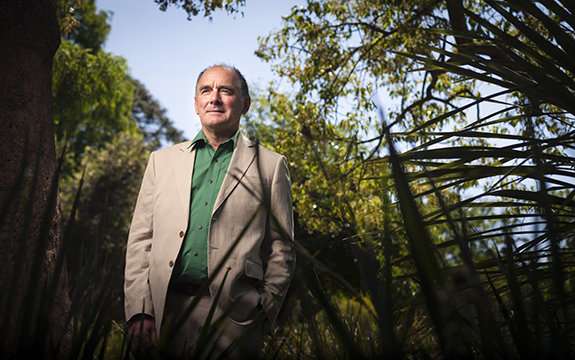Legumes for a sustainable farming future

Climate change and food security are two of the greatest challenges facing humanity. At Swinburne, Professor Mark Adams is exploring how legumes can play a role in sustainable agriculture.
Professor Adams is Professor of Bioscience and Innovation, and lead author of a new paper published in Trends in Plant Science.
He says we should be growing chick peas, lentils and other legumes, at least as often as we do wheat, barley and rice.
Cutting down on synthetic fertiliser
Approximately half the world's food production is supported by the use of synthetic nitrogen fertiliser, which helps crops grow faster and more productively.
Over-use of fertiliser nitrogen pollutes water and air, and can have knock-on effects that include loss of species, depletion of other soil nutrients, and contamination of drinking water.
Because they make their own nitrogen from the atmosphere, legumes are not as restricted by soil or fertilizer nitrogen. Professor Adams recent research shows that they are also not as heavily reliant on water as other crops.
"On a hot day they can close their leaf pores and save some water," Professor Adams says.
He says growing legumes can help reduce water and fertiliser demand and help meet nutritional needs.
"If we grew more legumes and less wheat, corn and rice, it would be a good thing"
Creating healthy soil
Professor Adams says rotating cereal crops with leguminous crops would also top up the soil with nitrogen without any need for synthetic fertiliser.
"The beauty of legumes is that their biological nitrogen fixation is self-regulating. Once the plant has enough, it shuts it down. It's a much more sustainable system."
He says substituting legume grains for cereal grains in both human and animal diets would reduce the water and energy demands of agriculture, while maintaining the availability of protein.
"Creating fertiliser, applying it to fields, growing grain, and feeding it to cattle involves releasing greenhouse gases every step along the way.
"By growing legumes and then letting the cattle loose in the paddock some of those steps and their associated greenhouse gases are removed, but with the same end result: fertilised fields and steak for dinner."
"Having chick-pea curry for dinner instead of beef vindaloo would remove yet another step and the associated greenhouse gases."
More information: Mark A. Adams et al. Crops, Nitrogen, Water: Are Legumes Friend, Foe, or Misunderstood Ally?, Trends in Plant Science (2018). DOI: 10.1016/j.tplants.2018.02.009
Journal information: Trends in Plant Science
Provided by Swinburne University of Technology

















